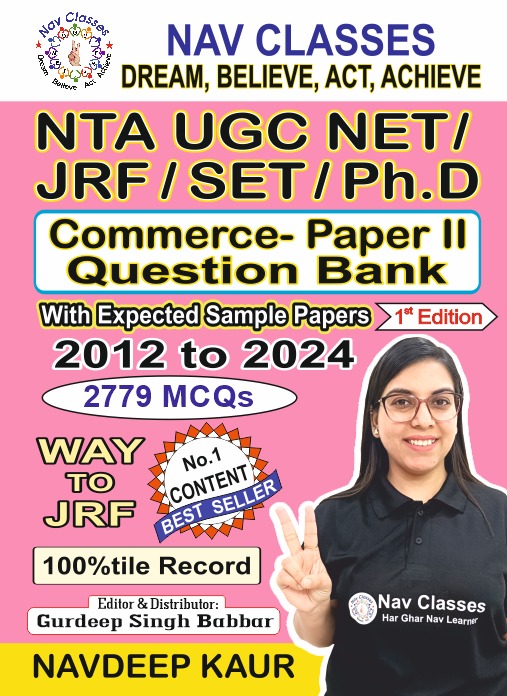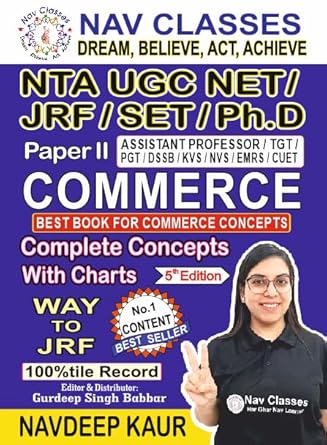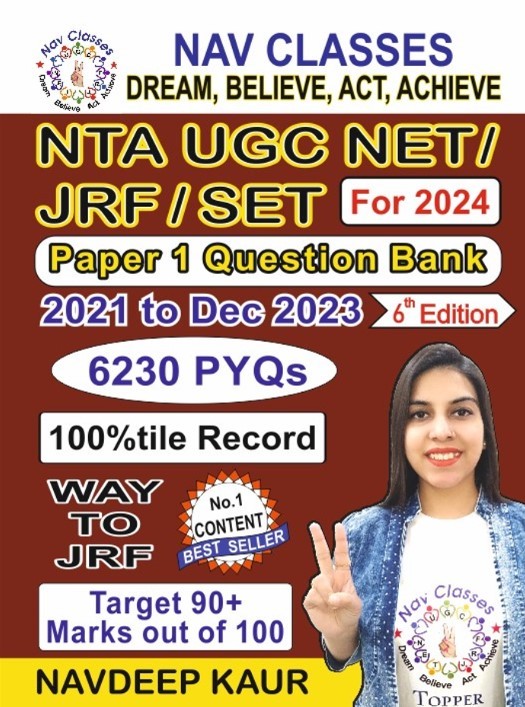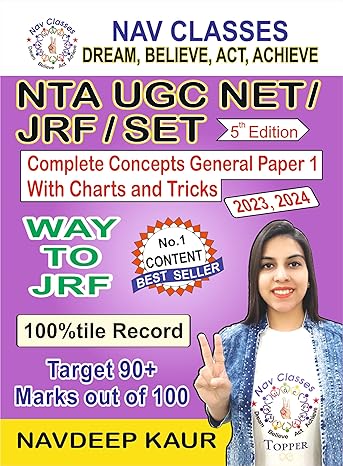1. Education is on the –
(a) Union list
(b) State list
(c) Concurrent list
(d) None of the above
शिक्षा पर है –
(ए) संघ सूची
(बी) राज्य सूची
(सी) समवर्ती सूची
(डी) उपरोक्त में से कोई नहीं
2. In education, the co-ordination and co-operation between the Union and the States is brought about by –
(a) Central Advisory Board of Education (CABE)
(b) University Grants Commission (UGC)
(c) Ministry of Human Resource Development (MHRD)
(d) Central Board of Secondary Education
शिक्षा में, संघ और राज्यों के बीच समन्वय और सहयोग किसके द्वारा लाया जाता है –
(ए) केंद्रीय शिक्षा सलाहकार बोर्ड (सीएबीई)
(बी) विश्वविद्यालय अनुदान आयोग (यूजीसी)
(सी) मानव संसाधन विकास मंत्रालय (एमएचआरडी)
(डी) केंद्रीय माध्यमिक शिक्षा बोर्ड
3. The Visitor of Vishwa Bharati University is –
(a) President of India
(b) Vice President of India
(c) Prime Minister of India
(d) Chief Minister of West Bengal
विश्व भारती विश्वविद्यालय के विजिटर हैं –
(ए) भारत के राष्ट्रपति
(बी) भारत के उपराष्ट्रपति
(सी) भारत के प्रधान मंत्री
(डी) पश्चिम बंगाल के मुख्यमंत्री
4. In the case of state universities, the Chancellor is –
(a) President of India
(b) Prime Minister of India
(c) Governor of a state
(d) Chief Minister of a state
राज्य विश्वविद्यालयों के मामले में, कुलाधिपति हैं –
(ए) भारत के राष्ट्रपति
(बी) भारत के प्रधान मंत्री
(सी) एक राज्य के राज्यपाल
(डी) एक राज्य के मुख्यमंत्री
5. Technical education cover courses in –
(a) engineering & technology, management, etc
(b) medical, nursing, pharmacy, etc
(c) Fashion & textile designing, catering technology, etc
(d) all the above
तकनीकी शिक्षा में पाठ्यक्रम शामिल हैं –
(ए) इंजीनियरिंग और प्रौद्योगिकी, प्रबंधन, आदि
(बी) चिकित्सा, नर्सिंग, फार्मेसी, आदि
(सी) फैशन और कपड़ा डिजाइनिंग, खानपान प्रौद्योगिकी, आदि
(डी) उपरोक्त सभी
6. The technical education system in the country is looked after by –
(a) Ministry of Human Resource Development (MHRD)
(b) All India Council for Technical Education (AICTE)
(c) Indian Institute of Technology (IIT)
(d) None of the above
देश में तकनीकी शिक्षा प्रणाली की देखरेख किसके द्वारा की जाती है –
(ए) मानव संसाधन विकास मंत्रालय (एमएचआरडी)
(बी) अखिल भारतीय तकनीकी शिक्षा परिषद (एआईसीटीई)
(सी) भारतीय प्रौद्योगिकी संस्थान (आईआईटी)
(डी) उपरोक्त में से कोई नहीं
7. The National Knowledge Commission (NKC) was constituted on –
(a)13th June, 2005
(b) 15th June, 2005
(c) 2nd October 2005
(d) 2nd October 2008
राष्ट्रीय ज्ञान आयोग (एनकेसी) का गठन किया गया था –
(ए) 13 जून, 2005
(बी) 15 जून, 2005
(सी) 2 अक्टूबर 2005
(डी) 2 अक्टूबर 2008
8. National Council for Teacher Education (NCTE) was first set up in –
(a) 1973
(b) 1986
(c) 1995
(d) 1996
राष्ट्रीय शिक्षक शिक्षा परिषद (एनसीटीई) की स्थापना सबसे पहले की गई थी –
9. University Grants Committee (UGC) was set up as an Advisory Board on the recommendations of –
(a) Curzon’s Policy
(b) Sargent Report
(c) Wood’s Despatch
(d) Hunter Commission
विश्वविद्यालय अनुदान समिति (यूजीसी) की स्थापना किसकी सिफारिशों पर एक सलाहकार बोर्ड के रूप में की गई थी –
(ए) कर्जन की नीति
(बी) सार्जेंट रिपोर्ट
(सी) लकड़ी का प्रेषण
(डी) हंटर आयोग
10. NKC was constituted by the Prime Minister of India –
(a) Atal Behari Vajpayee
(b) Dr. Manmohan Singh
(c) I. K. Gujral
(d) H.D. Deve Gowda
NKC का गठन भारत के प्रधान मंत्री द्वारा किया गया था –
11. Higher education refers to –
(a) Colleges
(b) Universities
(c) Technical & Medical institutes
(d) All the above
उच्च शिक्षा का तात्पर्य है –
(ए) कॉलेज
(बी) विश्वविद्यालय
(सी) तकनीकी और चिकित्सा संस्थान
(डी) उपरोक्त सभी
12. Higher education includes –
(a) Professional courses
(b) Technological courses
(c) Academic courses
(d) All the above
उच्च शिक्षा में शामिल हैं –
(ए) व्यावसायिक पाठ्यक्रम
(बी) तकनीकी पाठ्यक्रम
(सी) अकादमिक पाठ्यक्रम
(डी) उपरोक्त सभी
13. The basic entrance requirement into higher education is completion of –
(a) secondary education
(b) elementary education
(c) primary education
(d) None of the above
उच्च शिक्षा में बुनियादी प्रवेश आवश्यकता पूरी हो रही है –
(ए) माध्यमिक शिक्षा
(बी) प्रारंभिक शिक्षा
(सी) प्राथमिक शिक्षा
(डी) उपरोक्त में से कोई नहीं
14. The usual entrance age for higher education is –
उच्च शिक्षा के लिए सामान्य प्रवेश आयु है –
(a) 16 years
(b) 18 years
(c) 20 years
(d) 21 years
15. The main players in the higher education system in India are –
(a) Central government
(b) State government
(c) Private bodies/organisations
(d) All the above
भारत में उच्च शिक्षा प्रणाली के प्रमुख खिलाड़ी हैं –
(ए) केंद्र सरकार
(बी) राज्य सरकार
(सी) निजी निकाय/संगठन
(डी) उपरोक्त सभी
16. In India, higher education is broadly divided into –
(a) General higher education
(b) Technical higher education
(c) Professional courses
(d) All the above
भारत में उच्च शिक्षा को मोटे तौर पर विभाजित किया गया है –
(ए) सामान्य उच्च शिक्षा
(बी) तकनीकी उच्च शिक्षा
(सी) व्यावसायिक पाठ्यक्रम
(डी) उपरोक्त सभी
17. Courses covered at higher education include –
(a) under graduate courses
(b) post graduate courses
(c) research studies
(d) All the above
उच्च शिक्षा में शामिल पाठ्यक्रमों में शामिल हैं –
(ए) स्नातक पाठ्यक्रम के तहत
(बी) स्नातकोत्तर पाठ्यक्रम
(सी) अनुसंधान अध्ययन
(डी) उपरोक्त सभी
18. Higher education in India is the purview of –
(a) UGC
(b) AICTE
(c) NCTE
(d) Ministry of Human Resource Development (MHRD)
भारत में उच्च शिक्षा का कार्यक्षेत्र है –
(ए) यूजीसी
(बी) एआईसीटीई
(सी) एनसीटीई
(डी) मानव संसाधन विकास मंत्रालय (एमएचआरडी)
19. The Visitor of all Central Universities is –
(a) President of India
(b) Prime Minister of India
(c) Governor of a state
(d) None of the above
सभी केंद्रीय विश्वविद्यालयों के आगंतुक हैं –
(ए) भारत के राष्ट्रपति
(बी) भारत के प्रधान मंत्री
(सी) एक राज्य के राज्यपाल
(डी) उपरोक्त में से कोई नहीं
20. The chief expert and academic authority of a university is –
(a) Vice Chancellor
(b) Pro Vice Chancellor
(c) Registrar
(d) Dean
किसी विश्वविद्यालय का मुख्य विशेषज्ञ और अकादमिक प्राधिकरण है –
(ए) कुलपति
(बी) प्रो वाइस चांसलर
(सी) रजिस्ट्रार
(डी) डीन
21. The administrative work of the university is supervised by –
(a) Vice Chancellor
(b) Pro Vice Chancellor
(c) Registrar
(d) Dean
विश्वविद्यालय के प्रशासनिक कार्यों की देखरेख किसके द्वारा की जाती है –
(ए) कुलपति
(बी) प्रो वाइस चांसलर
(सी) रजिस्ट्रार
(डी) डीन
22. Technical education system in India comprises of –
(a) Indian Institutes of Technology (IIT’s)
(b) Indian Institutes of Management (IIM’s)
(c) National Institutes of Technology (NIT’s)
(d) All the above
भारत में तकनीकी शिक्षा प्रणाली में शामिल हैं –
(ए) भारतीय प्रौद्योगिकी संस्थान (आईआईटी)
(बी) भारतीय प्रबंधन संस्थान (आईआईएम)
(सी) राष्ट्रीय प्रौद्योगिकी संस्थान (एनआईटी)
(डी) उपरोक्त सभी
Answer key till 20 and Next answer key will discuss tomorrow at Navclasses Playlist U solve them and comment let’s see u will be correct next day
1. (c) Concurrent list
2. (a) Central Advisory Board of Education (CABE)
3. (a) The President of India is the Paridarsaka (Visitor) of the University, the Governor of West Bengal is the Pradhana (Rector), and the Prime Minister of India acts as the Acharya (Chancellor).
4. (c) Governor of a state
5. (d) all the above
6. (b) All India Council for Technical Education (AICTE)
7. (a)13th June, 2005
8. (a) 1973
9. (b) Sargent Report
10. (b) Dr. Manmohan Singh
11. (d) All the above
12. (d) All the above
13. (a) secondary education
14. (b) 18 years
15. (d) All the above
16. (d) All the above
17. (d) All the above
18. (d) Ministry of Human Resource Development (MHRD)
19. (a) President of India
20. (a) Vice Chancellor






